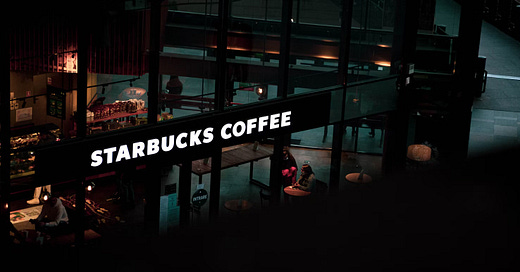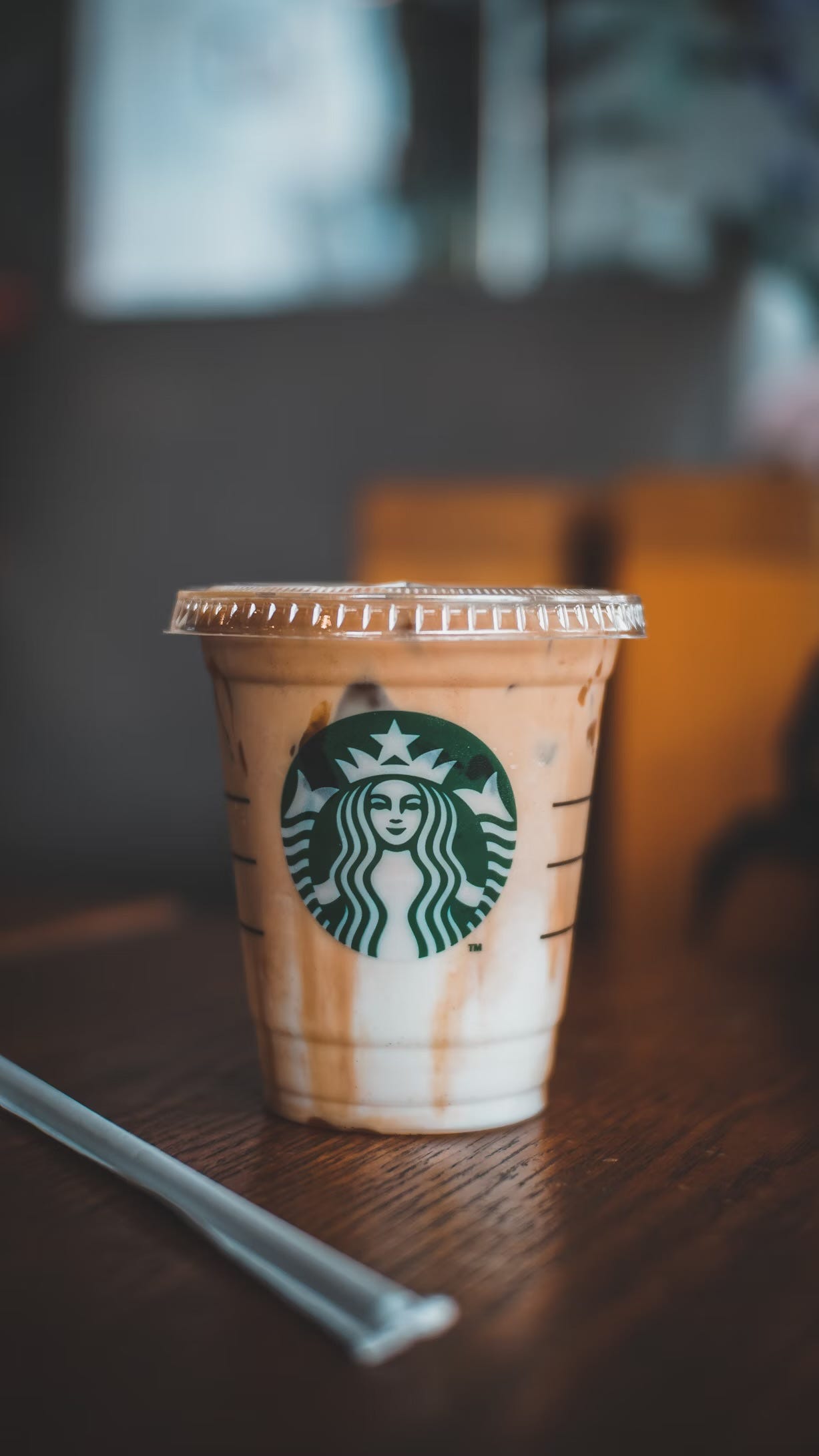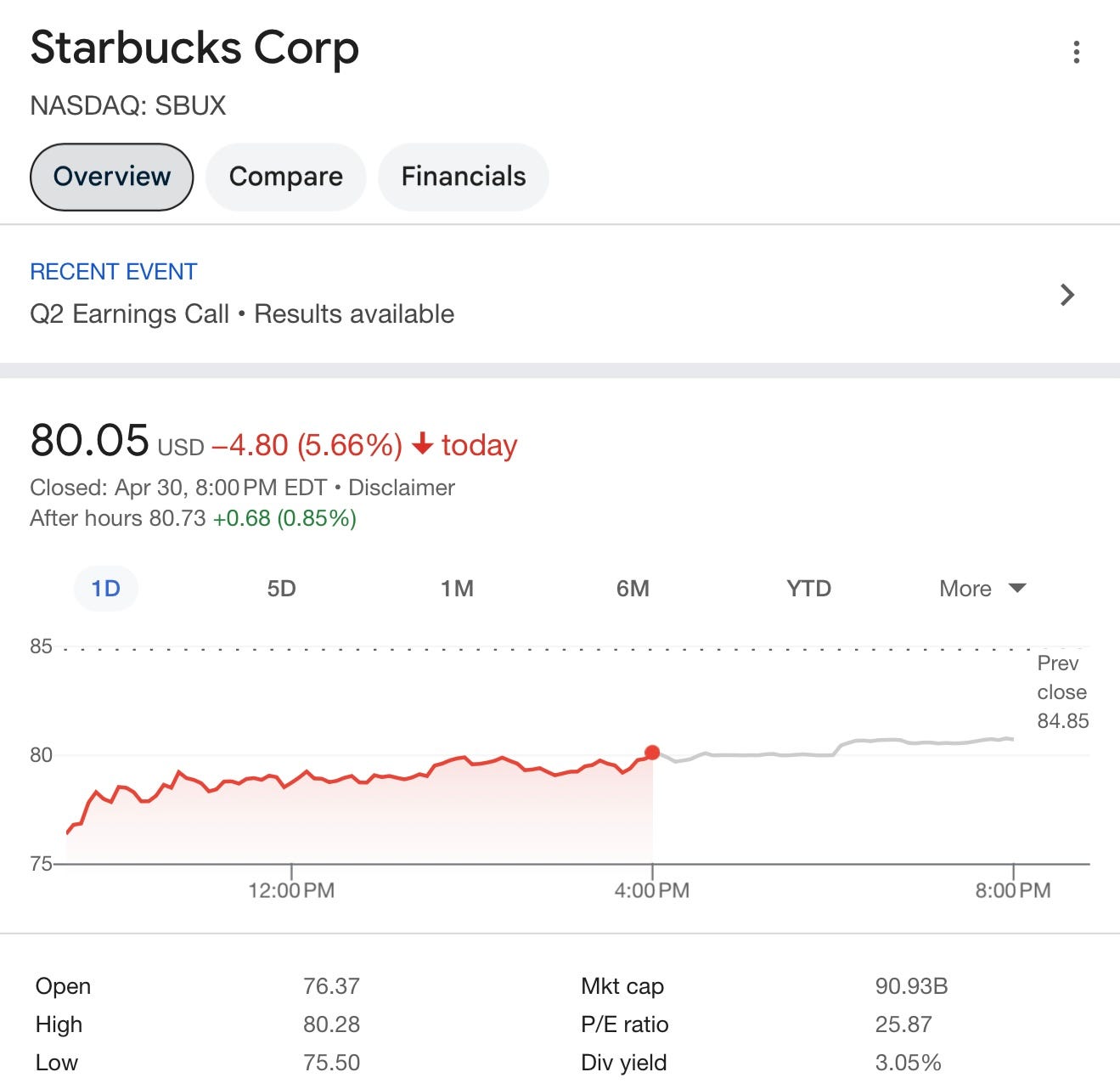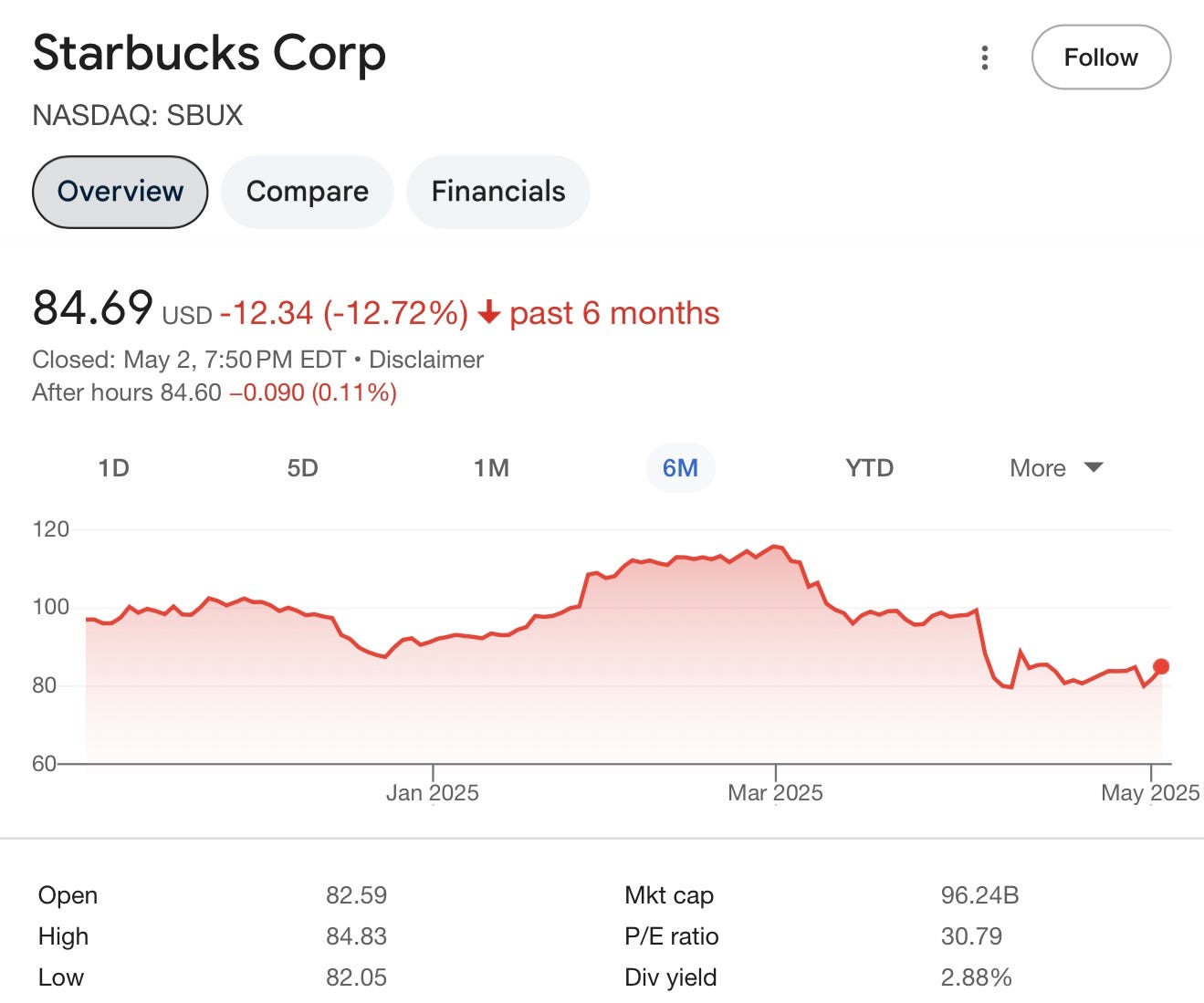“MUG HUGS” AND HANDWRITTEN NOTES ARE BACK! Starbucks Ushers In A New Era — A “Green Wave” of Hospitality.
“We are on track and if anything, I see more opportunity than I imagined,” Starbucks CEO. Same-store sales down for 5th straight quarter. Reclaiming “Third Places”.
"Our path Back to Starbucks in the U.S. is driven by four core initiatives: reintroduce Starbucks to the world, deliver the customer experience to win the morning, reestablish Starbucks as the community coffeehouse, and ensure Starbucks is the unrivaled best job in retail, recognizing our success starts and ends with our Green Apron partners," Starbucks CEO, Brian Niccol
QUICK TAKES
In the U.S., CEO Niccol sees the ‘potential’ to double the store count, equivalent to ~10,000 more Starbucks; possible markets include Texas and the Southeast.
Nineteen percent of Starbucks stores are located in China.
Aiming to reclaim the ‘third place’ — a welcoming gathering spot:
“Great coffee and our stores will always be catalysts for community”, he wrote. “Now more than ever the world needs places to come together with compassion and with love. Providing the world with a warm and welcoming third place may just be our most important role and responsibility, today and always”.
“At home, you’re part of a family. At work you’re part of a company. And somewhere in between there’s a place where you can sit back and be yourself. That’s what a Starbucks store is to many of its customers—a kind of ‘third place’ where they can escape, reflect, read, chat or listen”.
— Howard Schultz
Schultz though didn’t invent the phrase, rather it was coined by sociologist Ray Oldenburg who came up with the concept, and wrote about it in his 1989 book ‘The Great Good Place’.
The third place, Oldenburg wrote, “is a generic designation for a great variety of public places that host the regular, voluntary, informal, and happily anticipated gatherings of individuals beyond the realms of home and work”.
Niccol’s compensation package is four times that of his predecessor’s.
Starbucks is re-establishing a “welcoming coffeehouse vibe”, called “Back to Starbucks”. Self-serve condiment bars are back. Oat milk and non-dairy substitutions are now free.
The firm is re-introducing cozy mugs and handwritten notes — to “better connect with customers” and encourage “lingering”.
Across the board, food and beverage SKU reductions of ~30% are planned.
Starbucks unveiled a new dress code.
The firm is pausing price increases for FY2025, they are saying.
SBUX is working on process improvements, including labor deployment and a new order sequencing algorithm.
The goal is to deliver a 4-minute wait time, with particular focus on the morning rush, and address issues with mobile-order-and-pay. Some customers had been forgoing — and not paying — for their mobile orders.
Starbucks will be upgrading coffeehouse seating and adding ‘premium store touches’ and digital menu boards, in some stores.
The firm has announced cutting 1,100 corporate positions. Additionally, some open positions have been frozen or paused.
Earnings were announced on April 29. Same-store sales fell for the fifth straight quarter, as customers are seeking cheaper coffee options, or, are deciding on that coffee or their groceries, or eggs, for that matter.
The price of Arabica beans have soared, as Brazil has faced severe weather conditions.
Starbucks sources coffee from 28 countries, with most beans coming from Latin America; management is looking closely its sourcing strategy now.
Starbucks’ has complex purchasing and hedging practices that includes contracts and the spot market. These help insulate the firm from wild swings in coffee prices.
Deutsche Bank reported that the top reason customers are going less often to Starbucks is the high prices.
Visitor of 20,000 Starbucks — Winter.
Placer.ai said that while Starbucks continued to dominate the coffee-shop landscape in the U.S., visits to Starbucks stores during the first quarter of this year dipped 0.9% YoY, while visits to coffee chains overall were up 1.8%.
The Quarter
U.S. Starbucks locations saw transactions fall 4%, which in turn affected same-store sales, which were down 2%. Analysts had expected a decline of 0.3%. Average ticket size rose 3% in the U.S.
This was the result of fewer customers visiting Starbucks, but for the diehard fans, their spending was up.
Adjusted earnings per share of $0.41 for the quarter, less than the $0.49 expected by analysts, according to Bloomberg.
Revenue of $8.76 billion was short of the projected $8.83 billion.
Adjusted operating margin of 8.2%, below the 9.5% expected by analysts.
Comp store sales in Starbucks’ major market China were flat, as a 4% increase in transactions was offset by a 4% decline in ticket size.
“My optimism has turned into confidence that our ‘Back to Starbucks’ plan is the right strategy to turn the business around and to unlock opportunities ahead,” commented Niccol. “Improving transaction comp in a tough consumer environment at our scale is a testament to the power of our brand and partners getting ‘Back to Starbucks.’ We are on track and if anything, I see more opportunity than I imagined,” Niccol added.
Starbucks reported fiscal second-quarter net income of $384.2 million. This is half of what it was a year earlier: $772.4 million.
The company’s operating margin fell from 13% to 7%; additional baristas were staffed, and labor costs rose.
Initial Changes
Brian Niccol assumed the role of chairman and CEO of Starbucks on September 9, 2024, after leaving his post as chairman and CEO of Chipotle in late August.
On a related note, Niccol commutes weekly from Newport Beach, CA to Seattle, WA by corporate jet, as depicted in his offer letter.
One of the first things Niccol did was to reduce the frequency of discount-driven offers.
This resulted in 40% fewer discounted transactions year-over-year.
Starbucks also removed the extra charge for non-dairy milk substitutions and sought to make its pricing architecture more ‘transparent’ to customers.
Free refills were introduced on certain drinks, including for non-reward members.
“Coffee-Forward” Marketing Campaign
Starbucks launched a “coffee-forward” ad campaign in late January; Niccol feels the effort, so far, has met with success.
First quarter FY25 saw strong performance from “core” — coffee and espresso-based — beverages.
A recent ad titled “Stay Awhile” reinforcing its commitment to the in-store coffeehouse experience and touting free refills.









